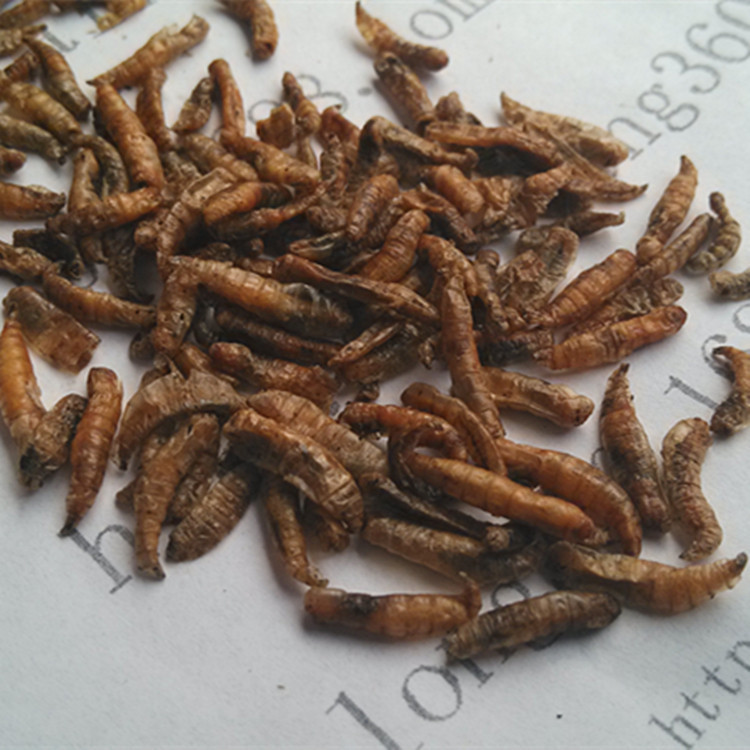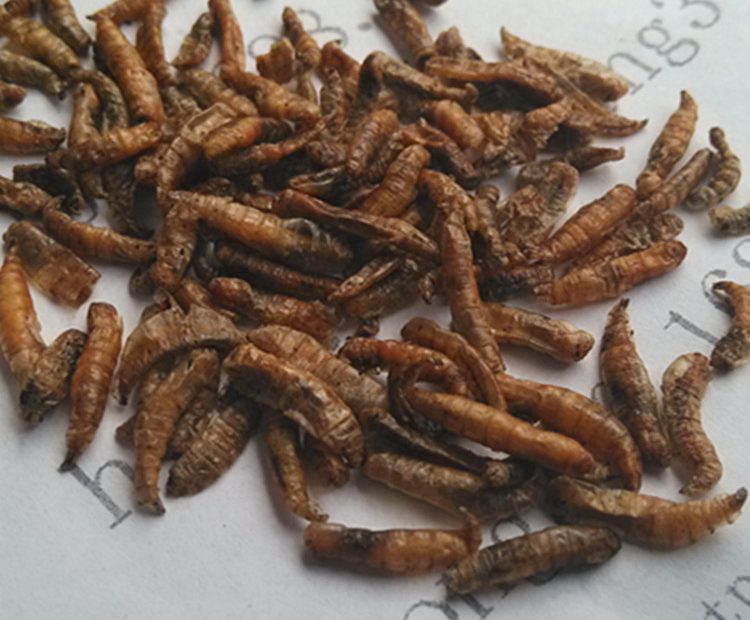Maggot oil, also known as medical-grade maggot oil, is a highly sought-after compound extracted from the larvae of the common green bottle fly (Lucilia sericata). It is widely used in the medical industry due to its powerful antimicrobial and tissue-healing properties. Supercritical CO2 extraction is the preferred method for extracting maggot oil due to its high selectivity, speed, and efficiency.
What is Supercritical CO2 Extraction?
Supercritical CO2 extraction is a technique used to extract desired compounds from various materials, including botanicals and insect larvae, using carbon dioxide in a supercritical state. CO2, in its supercritical state, functions similarly to a liquid solvent, dissolving the target compounds as the material is passed through the CO2. When the pressure is lowered, the CO2 converts back to a gas, leaving the target compound behind. This process is preferred over other methods due to its high selectivity, non-toxicity, and high efficiency.
The Supercritical CO2 Extraction Process of Maggot Oil
The supercritical CO2 extraction process of maggot oil typically involves the following steps:
- Harvesting and Cleaning the Larvae: Maggot larvae are harvested and cleaned to remove any debris or impurities that may affect the quality of the extracted oil.
- Drying and Grinding: The larvae are then dried and ground to a fine powder to aid in the extraction process.
- Extraction: The dried and ground larvae are packed into the extraction vessel, and CO2 is passed through the material at high pressure and temperature. This process dissolves and extracts the desired maggot oil components.
- Separation: The maggot oil components are then separated from the CO2 using a separator, leaving behind a high-quality and purified maggot oil extract.
- Collection: Finally, the extracted maggot oil is collected for use in medical and other applications.
Benefits of Supercritical CO2 Extraction of Maggot Oil
Supercritical CO2 extraction offers several advantages for extracting maggot oil, including:
- High Selectivity: The process selectively extracts the target compounds while leaving behind any unwanted substances or impurities.
- Efficiency: Supercritical CO2 extraction of maggot oil is faster and more efficient than other extraction methods.
- Non-Toxicity: CO2 is a non-toxic and environmentally friendly solvent, unlike some other organic solvents which can pose environmental risks and safety concerns.
- Superior Quality: The extracted maggot oil is of higher purity and quality than other extraction methods that use organic solvents.
Applications of Maggot Oil Extract
Maggot oil extraction has numerous medical applications due to its potent antimicrobial, anti-inflammatory, and tissue-healing properties. Some of the potential applications of maggot oil extract include:
- Wound Healing: Maggot oil extract is used in the treatment of chronic and acute wounds due to its ability to promote healing and prevent infections.
- Skincare: The extract is commonly used in skincare products for its excellent moisturizing and anti-aging properties.
- Anti-inflammatory: Maggot oil extract has potent anti-inflammatory properties, making it a potential treatment for various inflammatory conditions.
Properties of Maggot Oil Extract
| Property | Value |
|---|---|
| Color | Yellow |
| Odor | Slightly Pungent |
| Viscosity | Low |
| Flash Point | > 200 °C |
| Boiling Point | 0.5 °C (at 60mmHg) |
| Refractive Index | 1.433-1.437 |
| Specific Gravity | 0.9433 |
| Unsaponifiable Matter | 72%-75% |
| Saponification Value | 160-195 |
| Acid Value | 5.5-13.0 |
| Iodine Value | 75-100 |
Comparison of Supercritical CO2 Extraction with Other Extraction Methods
| Extraction Method | Advantages | Disadvantages |
|---|---|---|
| Supercritical CO2 Extraction | High selectivity, non-toxic, environmentally friendly, high efficiency | High equipment and operation costs |
| Solvent Extraction | Cost-effective, widely available solvents | the potential risk of harmful solvent residues in the final extract. |
| Steam Distillation | gentle process for heat-sensitive compounds | Low yields, requires large amounts of water, low selectivity |
Golden fly
The Chinese medicine grain worm is the dry body of the larvae of Chrysomyia megacephala (Fab.) And its relatives, also known as fly maggots.
Studies have shown that Grain Worm Oil has a significant effect on animal scalds, and is not irritating and allergic to animal skin.
Golden fly oils also has the effect of treating hyperlipidemia in mice. The free fatty acids, squalene, fat-soluble vitamins, and phytosterols contained in the grain oil have a certain effect on skin inflammation and microbial infection, and their development and utilization have good prospects.

CO2 extraction process of maggot oil
- CO2 Extraction Pressure: 290 bar;
- Extraction temperature: 45 ℃;
- Separation Pressure: 95 bar;
- Separation Tempration: 56 ℃.
- Oil yield: 19.04%.
About supercritical CO2 extraction process
Supercritical CO2 extraction technology has the advantages of strong extraction capacity, short production cycle, high product purity, and no solvent residue.
It has been widely used in food, pharmaceutical, chemical and other industries. However, this technology is mainly used to study the active ingredients in plants, and is rarely used in insects and animals. In particular, there has been no report on the optimization of supercritical CO2 extraction of grain oil by response surface methodology.
Through single-factor test and Box-Behnken test, the effect of different factors on the yield of Chinese medicine grain insect oil was investigated, and the process conditions of supercritical CO2 extraction of Chinese medicine grain insect oil were optimized.
CO2 EXTRACTION METHOD OF MAGGOT OIL
Pulverize the dried maggot of about 40 mesh, weigh 200.0 g of the maggots of powder, and put it into a supercritical CO2 extraction kettle.
After extraction and timing, adjust the pressure of the separation kettle to 0.5 MPa. After a certain period of time, turn off the compression pump to stop extraction, and collect the grain oil in the separation kettle.
CHOOSE THE RIGHT CO2 EXTRACTION PROCESS OF MAGGOT OIL
Choose four factors that affect the oil yield of grain insect oil, namely extraction temperature, extraction pressure, extraction time and CO2 flow rate, and use the extraction oil yield as the evaluation index to conduct a single factor investigation.
Based on the single-factor test, according to Box-Behnken’s central combination test design principle, a four-factor three-level response surface analysis method is used to optimize the extraction process of the grain oil.
Effect of temperature on co2 extraction process
Under the condition that the extraction pressure is 30 MPa, the extraction time is 90 min, and the CO2 flow rate is 20 L / h, the extraction temperature is used to perform a single-factor test on the yield of grain insect oil. The design extraction temperature is 30 ℃, 35 ℃, 40 ℃,
It can be seen that the extraction temperature increases from 30-45 ℃ with the temperature, and the oil yield of the grains from14.52% increased to 17.66%, but as the extraction temperature continued to rise, the oil yield began to decline. At 55 ℃, the oil yield was only 12.34%.
It can be speculated that the increase in the diffusion coefficient of oil and fat components due to the increase in temperature cannot fully compensate for the decrease in the dissolving capacity of the CO2 fluid, which leads to a decrease in the concentration of oil and fat in the supercritical CO2 fluid and a decrease in extraction rate. Therefore, there is a suitable extraction temperature under a certain pressure condition, this experiment chooses 45 ℃.
Effect of extraction pressure on co2 extraction process
Under the condition that the extraction temperature is 45 ℃, the extraction time is 90 min, and the CO2 flow rate is 20 L / h, the extraction pressure is used to perform a single factor test on the yield of grain insect oil.
The designed extraction pressures are 10 MPa, 15 MPa, 20 MPa, 25 MPa, 30 MPa, and 35 MPa. As the extraction pressure rises, the oil yield of grains also shows an upward trend.
From 10 MPa to 20 MPa, the oil yield rises faster, but after 20 MPa, the oil yield increases slowly. It is speculated here that the CO2 density is already higher under high pressure, and the compressibility is lower at this time, and the effect of increasing pressure on the solubility of oil and fat becomes smaller.
At the same time, it is considered that increasing the extraction pressure will increase energy consumption, and the appropriate pressure is selected to be 25MPa according to the actual situation.
Effect of extraction time on on co2 extraction process
Under the condition that the extraction temperature is 45 ℃, the extraction pressure is 25 MPa, and the CO2 flow rate is 20 L / h, the extraction time is used as a single factor to investigate the yield of grain insect oil. The designed extraction times are 30 min, 60 min, 90 min, 120 min, and 150 min, respectively.
With the extension of the extraction time, the extraction rate of the grain oil is also increased. After the extraction time is 90 min, the oil yield rises slowly with the extension of time. When the extraction time is 180 min, the yield of grain worm oil is 18.68%, and the oil yield increases by only 1.04% after 90 min.
As the extraction time increases, although the oil extraction is more complete, considering the time and other energy consumption, the appropriate extraction time is 90 minutes according to the actual situation.
Effect of CO2 flow rate on co2 extraction process
Under the condition that the extraction temperature is 45 ℃, the extraction pressure is 25 MPa, and the extraction time is 90 min, the CO2 flow rate is used as a single factor to investigate the yield of grain worm oil.
The designed CO2 flow rates are 5 L / h, 10 L / h, 15 L / h, 20 L / h, 25 L / h, and 30 L / h.
With the increase of supercritical CO2 flow rate, the oil yield of grains also gradually increased. When the CO2 flow rate increased from 5 L / h to 10 L / h, the oil yield increased significantly.
As the flow rate continued to increase, the oil yield increased slowly. When the flow rate is increased, the contact between the solvent and the material is enhanced, and the solute extraction process is accelerated.
Properly increasing the flow rate can significantly improve the extraction rate.
When the flow rate increases to a certain degree, the mass transfer time between the fluid and the material becomes shorter, resulting in a decrease or increase in extraction rate Slowed down, while fluid consumption increased, increasing production costs.
The optimization co2 Extraction process
The optimal parameters of CO2 supercritical extraction process of Chinese medicine grain worm oil are:
Extraction temperature 45.32 ℃, CO2 flow rate 23.21 L · h -1, extraction time 100.24 min, extraction pressure 28.67 MPa, under this optimal process conditions, the theoretical yield is 19.04%.
Taking into account the actual operating conditions, the optimal conditions for the CO2 supercritical extraction process of Chinese medicine grains and fats were corrected to extraction temperature 45 ℃, CO2 flow rate 23 L · h -1, extraction time 100 min, and extraction pressure 29 MPa.
After three parallel experiments, the actual yield of grain oil was 18.87%, and the relative error was 0.90% compared with the theoretical prediction.
